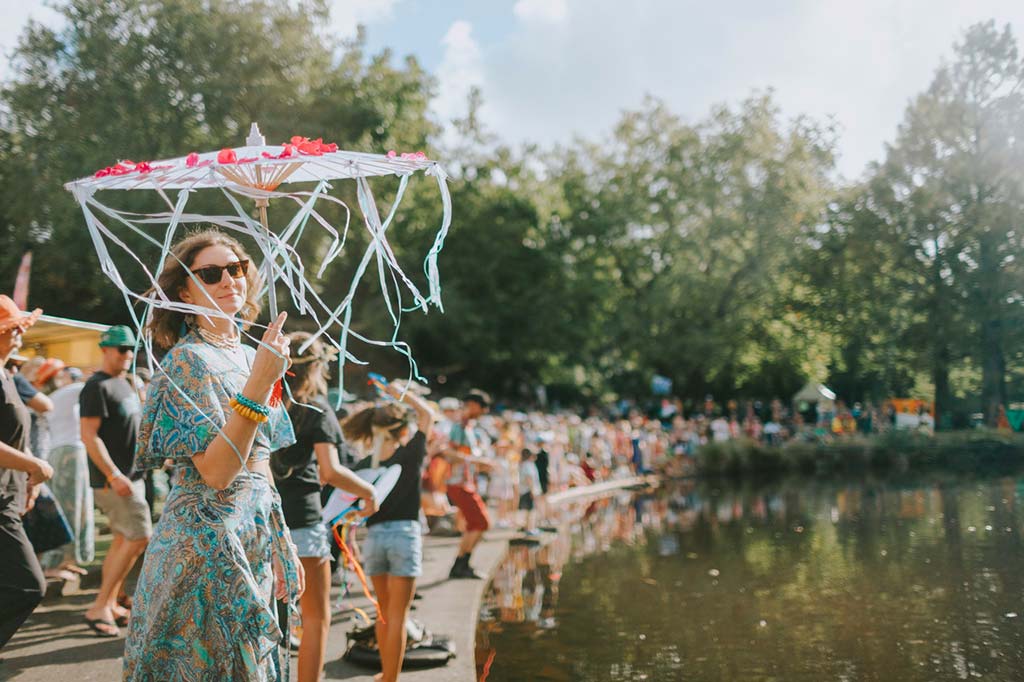It may be Womad’s twenty-first birthday, but it’s Taranaki that has been given a gift. In celebration of the festival’s coming of age milestone, we take a look at just how impactful this award-winning event has been.
Twenty-one years after opening its gates at the picturesque Brooklands Park, Womad has injected millions of dollars into the local economy, catapulted the region onto a global stage and woven its cultural magic into the fabric of Taranaki.
Pumping close to $150 million into the local economy since 2003, every year the award-winning festival contributes around $6m to Taranaki’s GPD and creates the equivalent of up to 100 full-time jobs.
Significantly its magnetic pull on tourists has grown, with out-of-town attendance soaring from 49 per cent of festival-goers in 2010, to a whopping 69 per cent in 2023. Carving out a reputation as a national attraction has boosted the cash flowing into the region, further amplifying Womad’s wealth of benefits.
Those undeniable economic rewards are only part of the equation, Auckland University of Technology’s senior lecturer Dr Sandra Goh says. The positive cultural and social impacts are equally as important, albeit not as easily quantifiable.
Early in her career the internationally award-winning academic experienced the powerful influence of Womad. In 1998 she worked on the inaugural Womad Singapore, an experience she describes as inspirational for her, her colleagues, and for Singapore.
For Taranaki, Womad has delivered more than 500 acts, including 1500 performers from 95 countries. In doing so it has continually connected the people of the region to different cultures, fostering awareness and instilling a vital and deeper understanding of both diversity and unity.
Alongside cultural and economic impacts, Sandra believes Womad enriches the wellness of people in Taranaki.
She says the hallmark event acts as a powerful vehicle for inspiration and provides significant opportunities for locals to develop career-enhancing skills. Offering musicians from Aotearoa the opportunity to perform beside diverse global acts, the festival also grows a vibrant community of artists and arts lovers in Taranaki.
“For Taranaki, Womad has become part of your world, and part of your narrative. Over time you see changes, you see how Womad has impacted lives, created opportunities, and you see a ripple effect as that positive wellbeing feeds into the place itself. It’s a longitudinal study,” Sandra says.
After 21 years in Taranaki, those who have grown up with the festival would make ideal candidates for that study. One of them is 15-year-old Tatjana Hanne, who has been to every Womad since she was four.
She speaks passionately about the magic of Kidzone, the joyfulness of the festival, and the collection of childhood memories it has provided. But it’s something less tangible that’s impacted her the most – Womad’s colourful playground of diversity.
“Seeing artists standing in front of crowds of people, sharing their cultures and their powerful messages has been an incredible thing for me. It’s given me a more diverse view of the world,” she says.
“Living in a small town like Stratford, you don’t always get that level of diversity, so growing up at Womad has helped me grow and learn as a person.”
To pay that forward Tatjana is volunteering in Kidzone in March, helping to create memories for the next generation of Womad youngsters.
Seeing those youngsters playing on the iconic letters of the festival is a highlight of the event for Womad NZ’s chair, Dion Tuuta.
“Nearly every whānau in Taranaki has a photo of their kids on those big letters,” he says.
For Dion (Ngāti Mutunga, Ngāti Tama, and Taranaki Iwi) another highlight is before the festival opens, at the pōwhiri at Ōwae Marae in Waitara.
“We whakatau and welcome all the artists. We mihi to them and we waiata to them, and then they do it all back, within their own cultural context.
“The cultural interplay between the artists and tangata whenua here is truly unique, and at the pōwhiri you see spontaneous exchanges that show, in a really positive way, how music and art transcend human barriers.”
Transcend is a word you often hear when it comes to Womad, and Brylee Flutey uses it too.
“The impact of Womad on Taranaki transcends economic statistics,” she says.
As the general manager of destination at Te Puna Umanga Venture Taranaki, Brylee says the festival not only pumps millions into the economy and positions Taranaki as lively, dynamic and inclusive, it also acts as a platform for local talent to shine.
The 2024 event is doing just that, with a Taste of Taranaki Pop-up showcasing the region’s best food and beverages. Harnessing the lure Womad has on out-of-town visitors, Brylee says the pop-up will nurture emerging businesses and connect them with potentially impactful customers.
Moments like these, when you can track Womad’s impact are key for Dion, and the producers of the festival, Womad UK and TAFT.
While other Womad festivals are funded by the state or for-profit entities, Womad NZ is run by a charitable trust and supported by partners. This unique collaboration means an incredible amount of passion, work and community spirit goes into making the event possible, let alone turning it into the impactful phenomenon it has become.
“If Womad did not exist, did not happen here in Taranaki, it would be without a doubt, a darker place to live,” Dion says.
“It really is a community-owned festival, and we should be immensely proud of everybody who makes it come to life – from Suzanne Porter the CEO of TAFT, to our partners, and right down to our volunteers.
“Taranaki owes a lot to Womad, and together we can build on that for the future. Because, you know, my mum loves Womad… my kids love it, and one day I want to take my grandchildren, so they can love it.”
